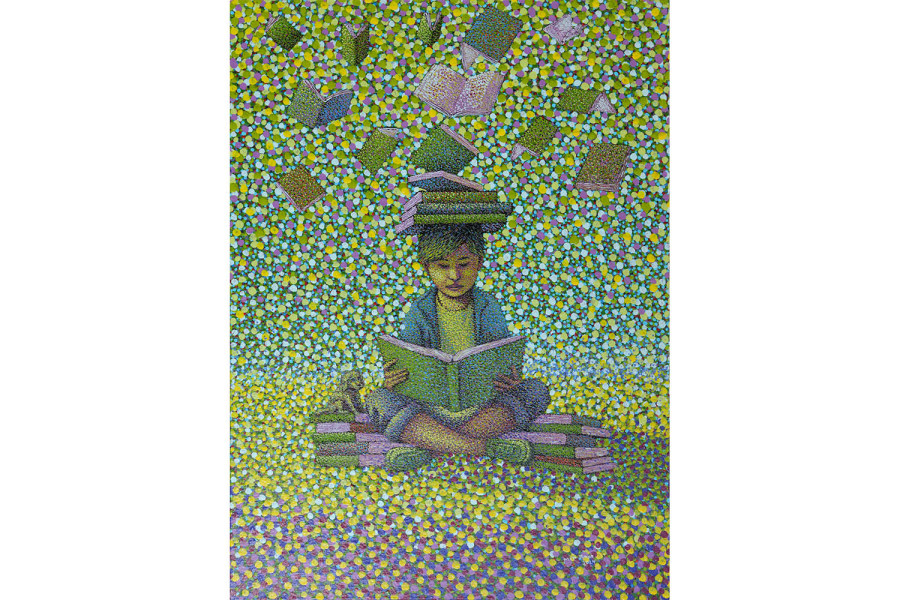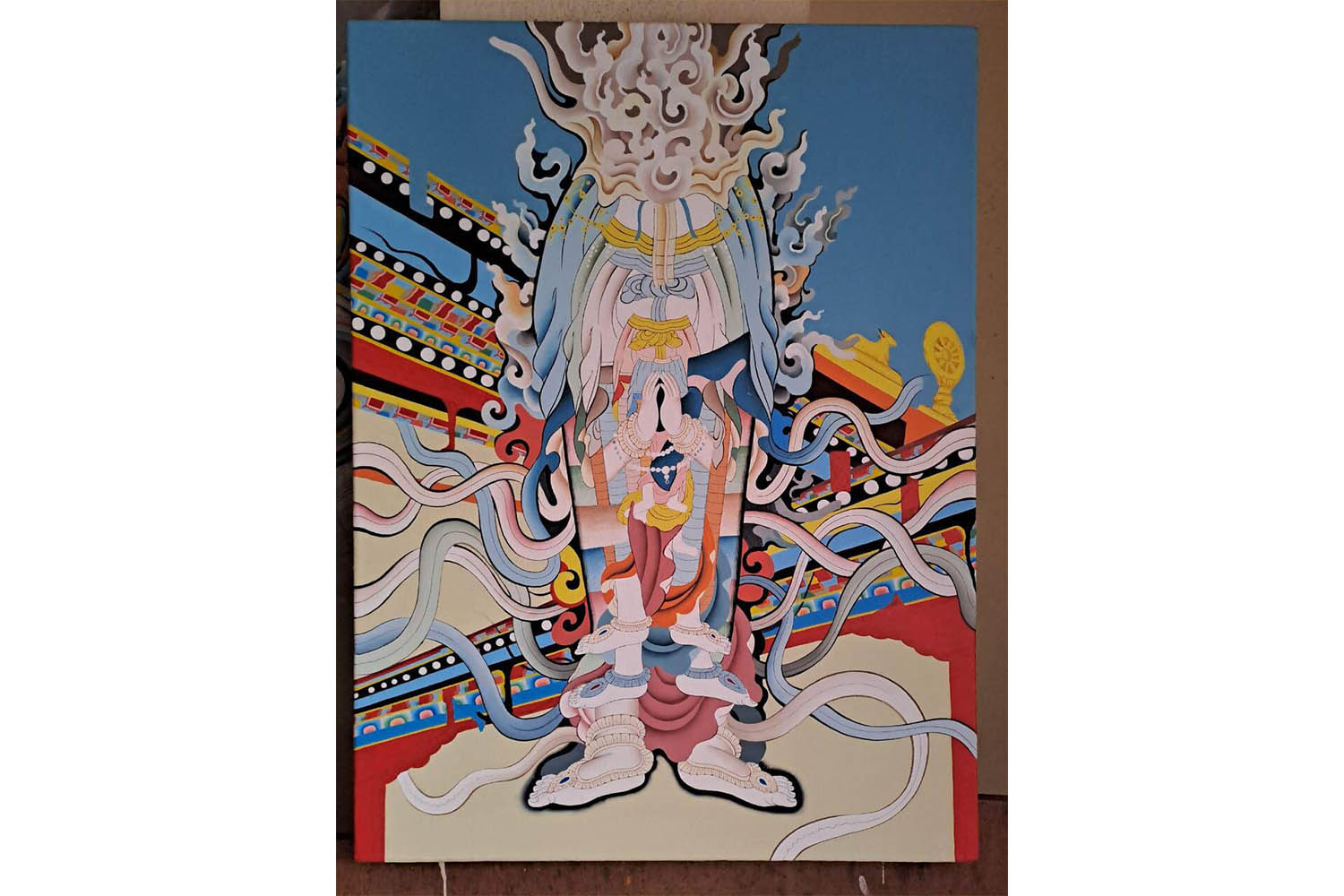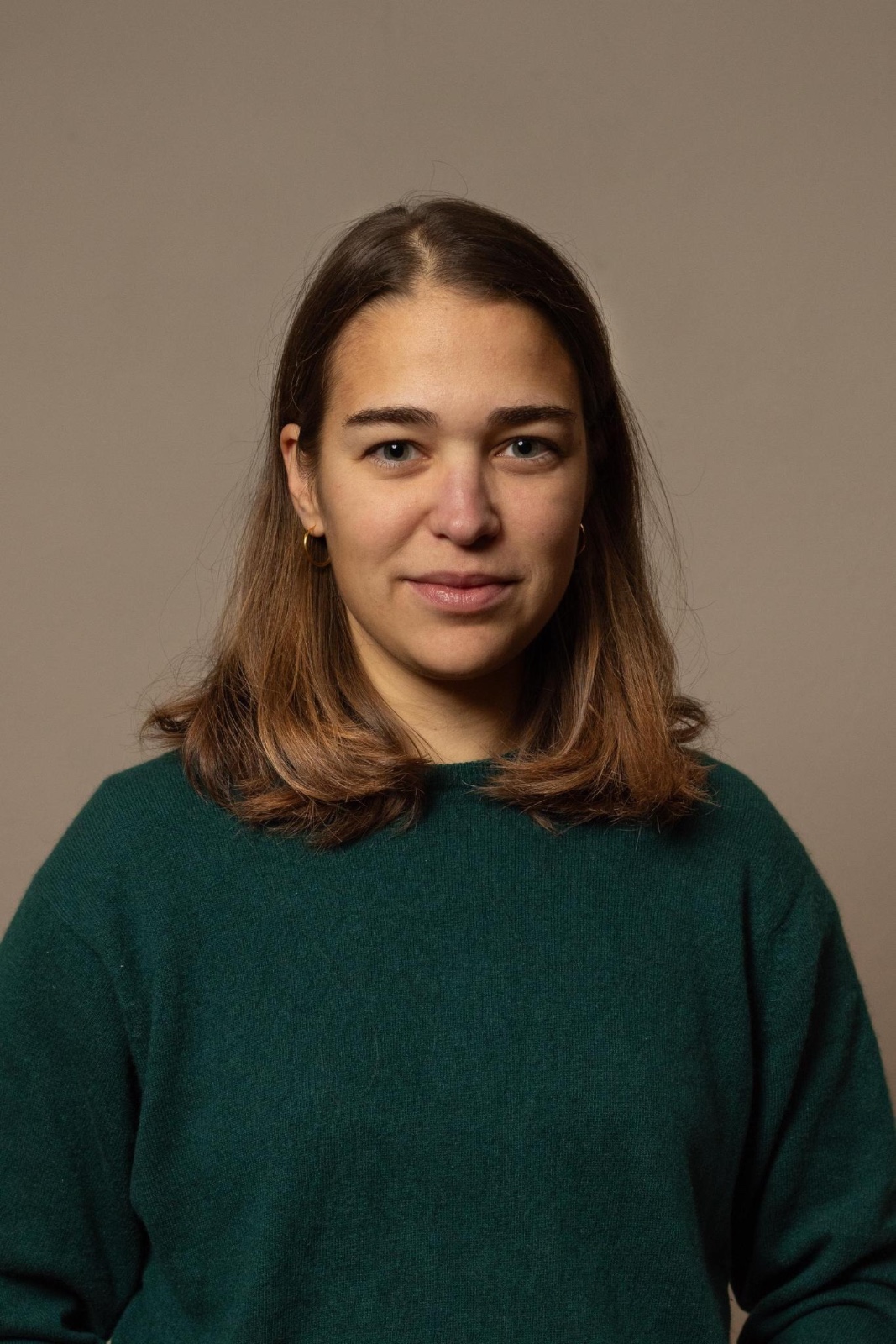Culture & Lifestyle
Cultural heritage meets contemporary creativity
A new exhibition at the Takpa Gallery features a range of artists, including newcomers and residency artists.
Xenia Klaus
Twelve-year-old Nawang Paljor Tamang initially didn’t want to try Thangka painting, but his father encouraged him to give it a chance. Now, he says, he loves it. Tamang is proud of his painting at the Takpa Gallery—a bright blue wish-fulfilling gem on a yellow background. He’s one of the youngest artists showing their work here.
Nawang’s painting is part of an exhibition organised by the Himalayan Art Initiative, a programme launched in 2019 to preserve the artistic heritage of the Himalayas. This past year, the initiative began offering residencies for established artists, and the results are now on public display alongside works from year-long Thangka and Contemporary art classes. Altogether, 22 artists are exhibiting their work at the Takpa Gallery.
The choice of Takpa Gallery for this exhibition is significant, as its founder, Tsherin Sherpa, is also one of the founders of the Himalayan Art Initiative.
Teacher and artist
Min Thapa, a seasoned artist and teacher, is familiar with the residency and classes offered by the Himalayan Art Initiative. With 20 years of experience and a degree from the Lalitkala Campus, he teaches the initiative’s contemporary art classes. In May 2024, he joined a residency at the Cunina Foundation in Sekha, Sankhuwasabha, where he also led art classes for local schoolchildren.
Thapa’s experience as a teacher and an artist shapes his work. His two paintings on display at Takpa Gallery explore the emotional world of teenagers, a stage he often encounters in his teaching. “Teenagers are constantly changing, living in their world,” he says.
While his work doesn’t directly reflect Himalayan themes, the region inspires his painting style. Thapa uses pointillism—a technique he says recalls the colourful mountain flowers he sees while trekking—to create vibrant paintings that capture the intensity and complexity of adolescence.
The other artists who were part of the two residency programmes of the Himalayan Art Initiative are Sara Tunich Koinich, Pooja Duwal, and Niranjan Maharjan. Maharjan, like Thapa, spent two weeks in Sekha, while the other two won a two-week residency in Phaplu.

Maharjan and Duwal tackle a shared theme in their work: the emptying villages of rural areas, though they approach it in distinct ways. Maharjan’s photographs capture the bonds between those who remain in these villages and their pets, filling the gap left by loved ones who have moved away. As fewer people stay behind, pets become sources of companionship and affection.
Duwal, meanwhile, focuses on the gods left behind, presenting a triptych that explores abandoned religious sites in the countryside. Like the villagers, even these sacred spaces are increasingly deserted as people migrate elsewhere.
Contrastingly, Sara Tunich Koinich’s paintings offer a different perspective. Rather than depicting abandonment, her works portray nuns striving to maintain a connection to their places of origin. Her art shows the nuns’ efforts to hold onto their spiritual roots despite the challenges of change and distance.
A deity chewing gum?
The Himalayan Art Initiative offers residencies to established artists interested in exploring cultural traditions and roots. However, Thangka and Contemporary art classes are open to all—anyone can join, regardless of experience. “We didn’t make any selections; all students have the chance to showcase their work in this exhibition,” explains Rashi Singh Thakuri, the gallery’s assistant.
These classes provide a wide range of skills and work experience. Some pieces are incredibly detailed, like Palsang Tamang’s intricate depiction of Garuda, painted on cotton using special mineral and gold-based pigments. Tamang chose Garuda—a protective figure in Buddhism—as his subject, saying he believed Garuda would offer him protection as well.
Pasang Lama’s paintings stand out for their elaborate detail. With decades of experience in Thangka painting, he also assists Tsherin Sherpa, the gallery founder. Yet, Lama joined the contemporary art classes to explore new creative freedoms. “In Thangka, there are strict rules. In contemporary art, you’re free to do anything,” he says.
Lama’s two showcased paintings reimagine traditional Thangka symbols. One piece depicts five pairs of feet, a tribute to his father’s advice to “stand on his own feet” and a nod to the number five’s significance in Buddhism. Surrounding the feet are swirling patterns, representing Lama's excitement as he explores contemporary styles.
Though he has exhibited other works at the Takpa Gallery before, Lama finds this show especially inspiring. His mentor, Tsherin Sherpa, also has a piece on display—a bold portrayal of a divine figure, richly detailed and set against a golden background, but with a playful twist: the figure is in underwear and blowing bubble gum, titled ‘We’re All in This Together’. The connection between Lama and Sherpa’s styles is unmistakable, blending tradition with bold, modern expression.

No time for two exhibitions
Seeing artists of all experience levels share the same space is wholesome. Young Nawang, determined to continue painting, is joined by Tsering Diki Sherpa, age 11, who displays her work here. Inspiring artists of all ages is a core aim of the Himalayan Art Initiative, and showcasing these varied works brings that mission to life.
While the students’ pieces, especially from the contemporary classes, add diversity and freshness to the exhibit, they also take up considerable space, which limits the display of work by residency artists. Expanding this aspect in future exhibitions could offer a deeper view of the initiative's influence on emerging and seasoned artists.
Gallery assistant Thakuri acknowledges that fitting such a variety of paintings into the limited space was challenging. They had considered holding separate exhibitions for the residency artists and the class participants, but the gallery’s packed schedule made that impossible. Thakuri is pleased with the opening’s turnout, calling it “a milestone for the Himalayan Art Initiative.” The exhibition celebrates various artistic voices and will run until November 23.
Himalayan Art Initiative Exhibition
Where: Takpa Gallery, Lazimpat
When: November 9 to November 23
Time: 11:00 am to 6:00 pm, closed on Mondays
Entry: Free




 14.12°C Kathmandu
14.12°C Kathmandu


.jpg&w=200&height=120)












